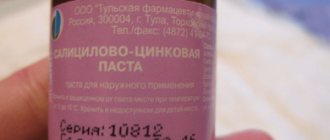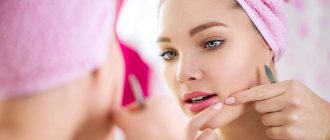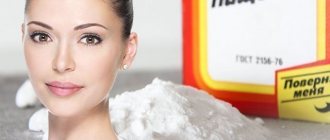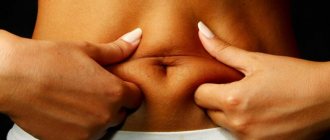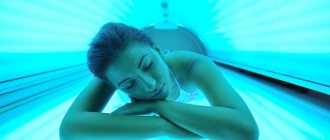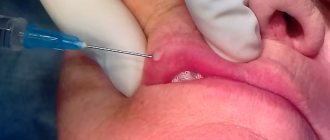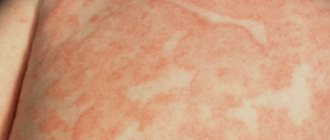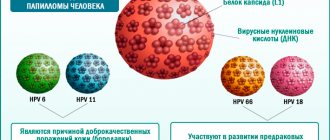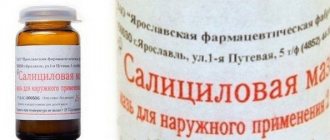Acne is a chronic disease of the skin and subcutaneous tissue. Most often occurs in boys and girls who have reached adolescence. By the age of 20, as the body's hormonal balance develops, acne usually disappears.
But in advanced cases, the disease continues to progress in adults.
Acne does not pose a serious health risk, but it often causes self-doubt, which can lead to psychological problems.
Types of acne
In traditional medicine, it is usually customary to distinguish four types of acne:
- Comedonal - the overwhelming majority of inflammatory elements are sebaceous ducts clogged with dead cells.
- Nodular cystic - purulent pimples cover a large area, inflammation spreads to the deep layers of the epidermis.
- Papulopustular - the skin is affected by small nodular formations - papules, which over time turn into pustules (seals filled with pus).
- Severe - includes deep inflammation of all existing types, there is a high risk of scarring of damaged tissues in the absence of proper treatment.
The rash can be located on any part of the body.
How is the severity of the disease determined?
The severity of acne is determined by the number of inflammatory elements of a certain type. The presence of scars also plays a decisive role.
Acne goes through four stages on the way from mild to severe. The changes that occur at each stage are reflected in the table below.
Stages of acne
| Severity | Comedones | Papules and pustules | Pustules larger than 1 cm | Nodular and cystic formations | Presence of inflammation | Scarring |
| I. Acne comedonica (mild) | Up to 20 | To 10 | None | None | None | No |
| II. Acne papulopustulosa (medium) | More than 20 | 10-20 | To 10 | None | Lung | No |
| III. Acne papulopustulosa (severe) | More than 20 | From 20 | 10-20 | Few | Strong | No |
| IV. Acne conglobata (very severe) | A lot of | A lot of | More than 20 | Multiple | Affects the deep layers of the epidermis | Yes |
At the third and fourth stages, acne is difficult to treat . It takes a lot of time, effort and money to get your skin in order. The efforts made do not always give good results. Therefore, it is important to consult a dermatologist in time.
Types of acne
Depending on the characteristics of development and external manifestations, acne is divided into several varieties.
Main types of acne:
- Papular.
- Pustular.
- Comedonal.
- Indurative.
- Phlegmonous.
- Conglobate.
Comedonal is the most common type of acne, which is a swelling with a black dot in the middle. The main reason for their appearance is considered to be excessive production of skin secretion, which clogs the pores.
Papular form - develops from the advanced stage of comedones. It is a rapid proliferation of bacteria, due to which the acne begins to merge with each other and fill with purulent contents.
Pustules are the name given to pustules filled with white or yellow liquid. They have completely different shapes, can merge into large spots and give a person unpleasant, painful sensations.
Why do acne appear on the thighs of men?
Acne is a disease that affects the sebaceous glands, so it can begin to develop on almost any part of the body. Men often find pimples on the inner and outer thighs.
The most common causes of acne in this area are as follows:
- failure to comply with personal hygiene rules (especially in the hot season);
- wearing tight clothing made of synthetic material;
- disruption of the gastrointestinal tract;
- excessive sebum secretion;
- hormonal disbalance;
- increased sweating;
- exposure to hazardous chemicals;
- being under stress for a long time.
Acne on the thighs can also be a manifestation of allergies, atopic dermatitis, demodicosis, or a symptom of any concomitant disease.
Attention! Only a doctor can determine the exact cause of the appearance of rashes on the body and select the appropriate treatment.
Examination and diagnosis
Diagnosis of the cause of acne includes:
- initial examination;
- general and hormonal blood tests;
- Ultrasound of the digestive and endocrine system (if necessary).
- If there is a suspicion of the development of demodicosis, scraping is additionally prescribed.
Based on the examination results, the specialist determines the severity of acne and the cause of its appearance. Based on these data, a treatment plan is developed.
Causes of acne
Endocrine disorders
If acne does not go away after treatment, it is recommended to donate blood for glucose, since skin problems may be a sign of diabetes.
Acne on the thighs appears due to an increase in the concentration of the hormone testosterone or estrogen. As a result of hormonal imbalance, excess sebum production occurs. The pores cannot remove as much secretion, causing the sebaceous glands to become clogged and a large, painful pimple to appear. The causes of rashes in men and women are the following pathological conditions:
- polycystic ovary syndrome;
- tumors of the pituitary gland, thyroid gland or adrenal glands;
- regular stress;
- uncontrolled use of hormonal drugs or contraceptives;
- pregnancy.
Poor hygiene and tight clothing
Tight clothes do not allow the skin to breathe, thereby clogging the pores.
There are many sweat glands located in the groin area, on the back and on the inner thighs. Excess sweat on the skin and heat create favorable conditions for the proliferation of pathogenic bacteria. They can penetrate the upper layers of the skin and multiply, causing inflammation. It can also be caused by tight or too tight clothing with rough seams. Such things can rub the thighs, microcracks form on the skin through which microbes penetrate. This causes small pimples to appear on the inner thighs of women and men.
Bad habits and physical inactivity
Alcohol and smoking also affect the appearance of rashes. The poisons contained in alcohols and nicotine inhibit the action of beneficial substances necessary for the skin, as a result of which its structure deteriorates. A sedentary lifestyle also negatively affects the skin of the thighs. When a person moves little, blood circulation in the thighs is impaired. Insufficient blood supply to this area of the body leads to oxygen starvation of the tissues, which causes small red pimples to appear.
Depilation
Pimples between the legs can appear due to shaving in private areas. During the depilation procedure, small cuts often occur and the hair follicle is also injured. Small pimples filled with pus appear if germs or red bumps get into the wound. Bubbles can also appear on overly sensitive skin.
Allergic reactions
A rash can appear from anything, including animal fur.
Acne on the buttocks and thighs, on the butt, as well as on other parts of the body occurs as a result of the immune response to an allergen that has entered the body. Histamine production increases and an allergic reaction occurs. The resulting pimples are very itchy, a runny nose, cough, redness of the eyes, swelling of the eyelids and mucous membranes may appear, and the general condition will worsen. The condition is provoked by:
- animal hair;
- microscales of skin and feathers of birds;
- dry daphnia for aquarium fish;
- flowering plants;
- woolen or synthetic clothing, especially on the lower extremities;
- dyes and preservatives in food;
- individual intolerance to medications taken.
Pyoderma
The causative agent of the pathology is pyogenic bacteria - staphylococcus, streptococcus, gonococcus. When microbes invade, inflammation of the hair follicle occurs and large and small ulcers are formed - pustules filled with pus. Later, the acne dries out or breaks open and a crust forms. In advanced cases, new ones form in place of dried pustules, and inflammation spreads to other areas of the skin. Main factors:
- endocrine disorders;
- hypothermia;
- decreased immunity and frequent colds;
- concomitant systemic diseases;
- stress;
- weight gain;
- injury to the skin of the thighs.
Genital herpes
Casual relationships can bring unpleasant illnesses.
The disease is caused by herpes simplex virus types 1 and 2. The disease is accompanied by the formation of blisters with clear liquid, which, after opening, form ulcers or erosions on the thighs. In addition to rashes, there is a burning sensation at the site of the lesion, swelling, redness, enlargement of local lymph nodes, fever, and headache. Herpes acne on the thighs is more common in women than in men. Etiology:
- lack of hygiene;
- infection with the virus by airborne droplets in childhood;
- sexual relations with a sick person;
- decreased immunity;
- using dishes and clothes of a sick person that have not been sanitized;
- transfer of infection from diseased areas of the body to healthy ones.
Treatment of acne on thighs
Since acne on the thighs in men rarely progresses to a moderate or severe stage, gentle means are used for treatment.
The basis is high-quality cleansing of the skin and exfoliation of dead cells.
For these purposes, pharmaceutical shower gels, soft washcloths and scrubs with small particles are used.
Pharmacy drugs
The skin is disinfected with chlorhexidine, miramistin, and hydrogen peroxide.
Inflammations can be treated with inexpensive ointments: salicylic, zinc, sulfur.
To treat acne on the thighs, it is not recommended to use alcohol-containing products , as they destroy the hydrolipidic barrier of the skin. In response to aggressive influence, the sebaceous glands begin to work more actively, which only aggravates the course of the disease.
Professional body care can be a good help in getting rid of acne Pharmacies offer many products from Noreva, Avene, Bioderma, La Roche-Posay, designed specifically for cleansing and moisturizing skin affected by acne or allergic rashes.
Folk remedies
Folk remedies are effective as a complement to the traditional therapeutic course. They help speed up the healing of the epidermis, increase local immunity and cope with unpleasant sensations.
To treat inflammation on the hips, use herbal decoctions and infusions that have anti-inflammatory and antibacterial properties: chamomile, mint, lemon balm, sage, calendula, St. John's wort, string .
It is prepared at the rate of 2 tablespoons of raw material per 250 ml of water. Use to treat damaged skin in the morning and evening.
Clay masks help relieve inflammation and normalize the functioning of the sebaceous glands . 5 tbsp. l. powder is mixed with the same amount of pure water or herbal decoction, 3-4 drops of essential oil are added. You can use tea tree, lemon, rosemary, bergamot, lavender, sage, alone or as a mixture.
The mask is applied to the thighs and left for 20 minutes. For convenience, you can wrap the treated areas with cling film. After the specified time, the clay is washed off and a light moisturizer is applied.
Attention! Before using folk remedies, you must ensure that there is no allergic reaction.
Diet food
Proper nutrition plays an important role in the treatment of acne at any stage.
- to exclude from your usual diet , as they provoke increased secretion of skin secretions.
- The basis of the menu should be vegetables, fruits, nuts, dietary meats and fish. All dishes can be boiled, baked or grilled without adding oil.
- The treatment process will be accelerated by daily consumption of fresh herbs. It is rich in zinc, which helps normalize the functioning of the sebaceous glands.
How to get rid of scars?
is almost impossible to get rid of scars left at the site of deep inflammation at home . But modern cosmetology offers various salon methods for smoothing the skin's relief: chemical peeling, mechanical and laser resurfacing, ozone therapy, microdermabrasion. The result is visible after just a few procedures.
cosmetologist will help you choose the most effective way to get rid of scars .
Treatment options
In most cases, treatment of rashes on the inner and outer thighs is carried out comprehensively . Medicines for internal and external use and antiseptic solutions are used.
Traditional recipes are considered an effective addition to the traditional treatment of acne on the thighs and buttocks in women . Various decoctions, infusions and tinctures from medicinal plants have a noticeable drying effect, and also enhance the effect of using medications.
To cleanse the skin, it is very important to follow a special diet, as well as completely change your usual lifestyle - pay sufficient attention to hygiene procedures, wear clothes made from natural materials, and give up bad habits.
In the video below, the blogger talks about how she was able to get rid of acne on her thighs and buttocks. We recommend listening.
Drug treatment of acne on the thighs in women
Among the most effective drugs to eliminate acne on the thighs are the following:
- Differin.
- Sulfuric ointment.
- Zinc ointment.
- Skinoren.
- Zenerite.
- Retinoid ointment.
Before using any drug, you should definitely consult a dermatologist , since each of them has its own indications and contraindications for use .
ATTENTION! In the most severe and advanced cases, antibacterial therapy is recommended. Most often, modern broad-spectrum antibiotics are prescribed. Your doctor will recommend the specific medication and its dosage.
Diet
An important part of treating thigh rashes is diet . With improper nutrition, harmful wastes, toxins and breakdown products accumulate in a woman’s body, which have a negative impact on the condition of the skin of the face and body.
In order to get rid of acne, you must strictly limit the consumption of the following foods:
- spicy;
- fat;
- fried;
- marinated and smoked.
To improve the condition of your skin, you should try to give up confectionery, carbonated and alcoholic drinks, and strong black coffee. It is very important to carefully ensure that your daily diet contains a sufficient amount of vitamins, microelements, organic acids and plant fiber.
The menu should be dominated by fresh vegetables, herbs, fruits and berries, lean meats and fish, seafood, cereals, dairy products, and rye bread. It is very important to maintain the correct drinking regime, consuming a sufficient amount of unsweetened tea, still mineral water, compotes, fruit drinks, and freshly squeezed juices.
Folk remedies
Folk recipes that have been extremely popular for many decades will help you quickly and effectively get rid of acne on the skin of your thighs.
- salicylic acid, iodine or hydrogen peroxide to the area of the rash twice a day .
- Tea tree oil has an excellent antibacterial effect , which should also be regularly applied to affected areas of the skin.
- You can prepare a decoction of medicinal herbs , which will help get rid of the acne problem in the shortest possible time. To do this, you need to mix a teaspoon of dried and pre-crushed flowers of coltsfoot, St. John's wort, chamomile and calendula, then pour a teaspoon of the herbal mixture into 200 ml of boiling water. After the product has infused and cooled a little, it is recommended to wipe the area of the rash 2-3 times a day.
- Alcohol tincture of calendula , in which you need to moisten a cotton pad, is excellent for wiping acne on the thighs and buttocks Freshly squeezed garlic juice has a similar effect - several garlic cloves must be passed through a press, and then the resulting pulp must be applied to the rash.
- Cream made from turmeric and vegetable has drying and anti-inflammatory properties To prepare it, 7 tablespoons of turmeric, crushed into powder, need to be combined with 5 tablespoons of olive or flaxseed oil, mix everything thoroughly and apply daily to acne.
If, after using all the traditional and folk medicine described above, the number of rashes on the thighs does not decrease, the woman is advised to immediately visit a dermatologist. If treatment is started late, unattractive scars and cicatrices may form on the skin , but thanks to the rapid development of the cosmetology field, getting rid of them is not difficult.
Another beauty blogger talks about her personal experience of dealing with pimples on her thighs.
Possible consequences
In the absence of timely and competent treatment, rashes on the skin of the thighs can have dangerous consequences for a woman’s health. In no case should you squeeze out acne yourself - this can lead to the active spread of acne on healthy areas of the skin.
Also, independent opening of pustules often leads to further infection , the development of furunculosis, and abscesses. Such disastrous consequences can result in surgical intervention for a woman.
In case of constant rubbing of the legs, the use of scrubs and peelings for the skin of the thighs, non-healing wounds may form, which are accompanied by itching, burning and pain. Formed wounds facilitate the penetration of pathogenic bacteria and microorganisms into the body, which causes the development of serious diseases.
If treatment was started late and rough pits, scars or scars appeared on the skin of the thighs and buttocks, this is not yet a reason to fall into despair. To eliminate them, you need to seek help from a dermatologist or cosmetologist. Thanks to the rapid development of the cosmetology field, in just a few sessions you can get rid of visible unevenness and scars.
The most effective cosmetology methods in the fight against acne scars are mesotherapy and laser therapy. In the most severe and advanced cases, cryotherapy - that is, removal of defects using liquid nitrogen.
Adviсe
The following tips will help prevent acne from spreading to healthy areas of the skin and speed up the treatment process:
- carefully maintain personal hygiene , especially after sports and during the hot season;
- use non-comedogenic moisturizers (if the skin suffers from a lack of moisture, the sebaceous glands begin to intensively produce secretions);
- exfoliate dead skin cells once a week;
- try to eat right;
- give preference to natural fabrics;
- Use paper towels to dry areas of skin affected by acne.
These recommendations will help to avoid deterioration of the skin condition during the fight against acne, as well as maintain the result after completion of treatment.
Other causes of rash
In adolescence, the formation of a rash with purulent contents is caused by hormonal changes in the body. For the same reason, newborns develop milia, which disappear over time. Teenage girls sometimes develop watery blisters on the arms, legs, and bikini area due to mechanical hair removal. Other causes of the rash also include:
- insect bites;
- long-term use of medications;
- hypothermia;
- nervous disorders (neurodermatitis);
- dysfunction of internal secretion organs;
- hormonal disorders;
- diseases of the body's functional systems;
- metabolic disease.
We suggest you read: What is the danger of toenail fungus for the body if it is not treated?
Many parents confuse water pimples with a disease that has a similar name - dropsy. However, this disease is not classified as a skin pathology. Dropsy is expressed as swelling due to excessive accumulation of fluid that does not leave the body on its own. The cause of the disease is a disruption of the lymphatic system.
Pimples cannot be completely cured, but there are a number of recommendations that, if followed, can prevent their occurrence:
- Maintaining a healthy diet. In the diet, increase the amount of foods containing vitamins A, C, E, and omega-3. Limit consumption of animal protein. People prone to allergies are advised to adjust their diet with a specialist.
- Proper hygiene. You need to use detergents with a pH close to the skin. When using shaving machines, change the cassette before each procedure. It is good to clean the attachment on your epilator.
- Try not to wear tight pants, especially in hot weather. The training suit is washed after each visit to the gym.
- Control your time in the sun.
It is recommended to visit a dermatologist annually.
This unpleasant skin rash can be caused by various factors. In this case, acne can appear both throughout the body and on individual parts of it. The most common reasons for their appearance:
- herpes;
- scabies;
- pemphigus;
- allergy;
- fungal infections;
- neurodermatitis;
- metabolic disease;
- hormonal disbalance.
Watery pimples often occur when the immune system is weakened, the body is overheated or hypothermia, or constant stress. Only a doctor can determine the true cause of their appearance.
There are many different diseases that are accompanied by the occurrence of watery skin rashes. Below are the most common ones.
Water pimples on the face very often appear with herpes. As a rule, they are located in groups, often merging into one large blister. This disease may be accompanied by burning, itching, chills and general malaise. You should know that it can be transmitted by airborne droplets, and the herpes virus remains in the human body forever.
Under favorable conditions (overheating, hypothermia, weakened immunity), the patient develops pimples on the face (most often on the lips or wings of the nose). To combat such rashes, special creams and antiviral drugs are used. A water pimple should not be squeezed out or the dry crusts removed from it, as this may lead to the appearance of new rashes.
Very often, the cause of water pimples is the herpes simplex virus.
With scabies, the appearance of watery pimples is accompanied by severe itching, which becomes especially severe at night. The first skin rashes appear on the hands and wrists, and then they spread throughout almost the entire body. Acne due to scabies goes away only after appropriate treatment of the underlying disease is carried out.
Pemphigus is a serious disease of unknown origin (most likely of viral etiology). With it, soft bubbles filled with liquid, which is sometimes cloudy, appear throughout the body. They first appear in the mouth and then spread to the entire body. These rashes quickly burst, forming large erosions. Corticosteroid drugs (Prednisone, Prednisolone, Hydrocortisone) are prescribed as therapy.
In recent years, one of the most common causes of such acne has become neurodermatitis, which is an allergic disease. It occurs when a person’s immune system is weakened against the background of psycho-emotional problems (stress, depression). In this case, it is necessary to consult a psychotherapist and a neurologist, who can prescribe antidepressants, sedatives and sedatives.
Types of skin rashes
Each of the above types of rashes differs significantly from each other. To distinguish a rash, you need to know the specific signs of each of them.
| Characteristics | Types of rash | ||
| Pimples | Folliculitis | Allergic rash | |
| What does the rash look like? | Red bumps that rise above the skin level. Elements of the rash may be purulent. | Red bumps, significantly elevated above the skin level, appear around the hair. Elements of the rash may be purulent. | Small red bumps located close to each other. Elements of rash without pus. |
| Rash sensations | Not itchy, painful with significant inflammation | Itchy, no pain | |
| Specific differences | Occurs not around the hair follicle | Occur around the hair follicle; after the process begins to decline, a crust forms | A specific symptom is itching. The elements are small and without pus. |
DETAILS: Cucumber face mask for acne
The skin is the largest human organ by area. The skin is constantly in contact with the environment, which can be quite aggressive and non-sterile. As a result of unsuccessful contact, acne appears in various areas of the lower extremities.
As a rule, the following acne occurs on the legs:
- small red ones;
- white solid;
- watery;
- red carpets;
- large inflamed ones.
The reasons for this phenomenon may be common to men and women or specific to each gender. In any case, acne on the thighs cannot be ignored. Even in winter, when the rash is not visible under clothing, it is necessary to promptly identify and treat this skin pathology. Pimples sometimes cause severe itching.
As a result of scratching, they burst, turning into open wounds. This is fraught with the penetration of infection into the body and the occurrence of various diseases. In addition, after the wounds heal, quite large scars and cicatrices remain, which significantly spoil the appearance of the legs. The causes of acne can be very diverse.
The reasons for this phenomenon may be common to men and women or specific to each gender. In any case, acne on the thighs cannot be ignored. Even in winter, when the rash is not visible under clothing, it is necessary to promptly identify and treat this skin pathology. Pimples sometimes cause severe itching.
As a result of scratching, they burst, turning into open wounds. This is fraught with the penetration of infection into the body and the occurrence of various diseases. In addition, after the wounds heal, quite large scars and cicatrices remain, which significantly spoil the appearance of the legs. The causes of acne can be very diverse.
Skin is the outer covering of the human body; it efficiently performs its protective functions. The epidermis is considered the largest organ that takes the blow from the external harmful environment, so it needs proper care.
Unfortunately, it is not always possible to keep the skin in excellent condition and unpleasant acne appears on the legs.
They not only spoil the aesthetic, but can also be accompanied by unpleasant symptoms: itching, burning, redness.
Acne appears in both girls and men. There are many reasons for the occurrence of such an unpleasant pathology. Whatever it is, the rash cannot be ignored. Even if an unpleasant discovery was discovered in winter, it must be eliminated.
Typically, pimples are accompanied by itching, during which they are scratched.
An infection can be introduced into the skin, causing an inflammatory process.
If you do not pay attention to the problem, then after healing, scars may remain on the legs, which significantly spoils the appearance.
There are many reasons for the appearance of acne, so it is important to determine the source of the disease and then begin treatment.
